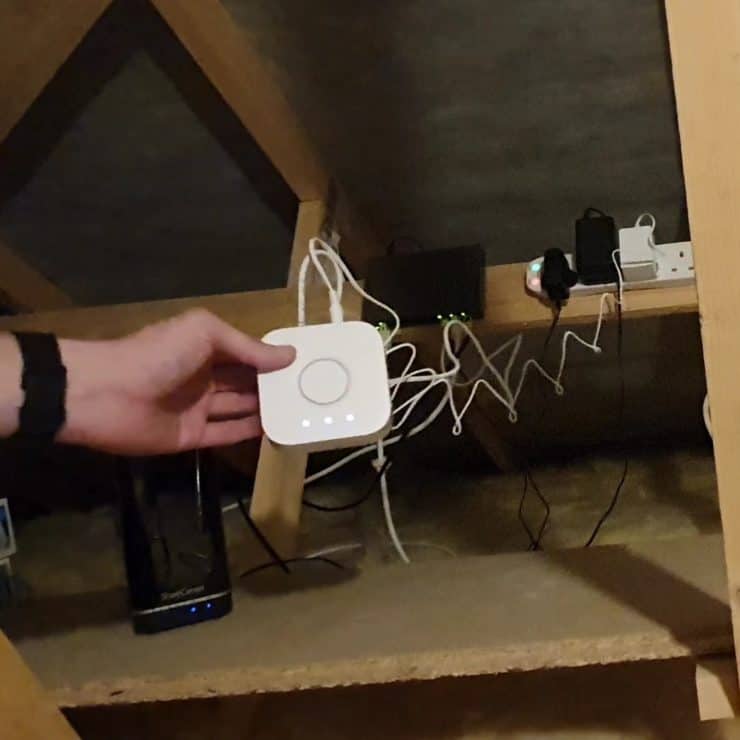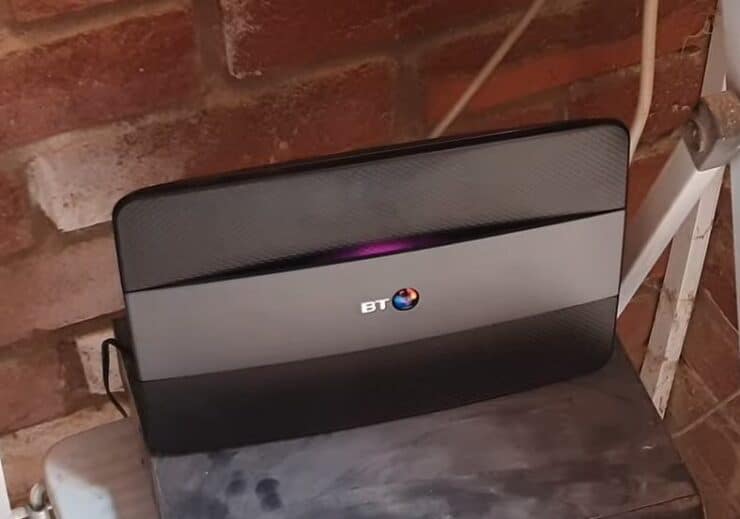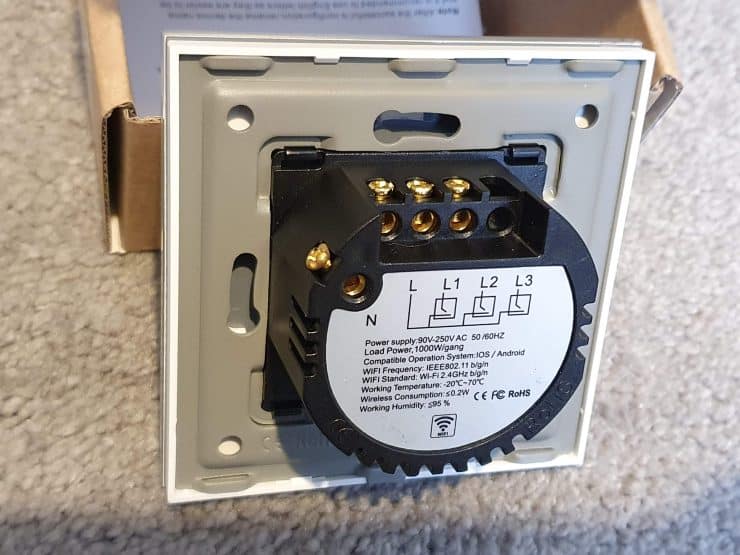Smart switches are one of the keys to a fully unlocked smart home. These switches you let transform your standard home lighting into a seamless smart experience. Smart switch come from a wide range of manufacturers that feature several different types of controls – from basic on/off functionality, to more advanced dimming (Through dimmer switch) and even color (RGB) control.
Smart switch are designed to make your entire smart home experience easier. They often integrate voice control, scheduling, and a variety of control features into your lighting. Depending on the model or how they are hooked up, they can even help you transform regular lighting into smart home lights. That all sounds great, but a common question is whether you need to run out and buy an extra hub for most smart switches to work?
Depending on the brand of smart switch that you purchase, you may or may not require a hub – many Wi-Fi enabled switches don’t need a hub, but other types do require a smart hub. It all depends on which manufacturer made your smart switch, and what protocol they use.
“Protocols”: How do Smart Devices Stay Connected?
Like most smart devices, there are a few basic ways a smart switch can connect into the rest of your smart plugs systems.
Most of these devices rely on radio signals to communicate. This can be ZigBee, Z-wave, or Wi-Fi communications. This comes with a few trade-offs that we’ll get into later.
There are even high-end switches that connect via Ethernet cables, but these models are still emerging and have very limited functionality so far. With that said, there is a lot of potential for wired smart switches on the horizon.
Generally speaking, the Wi-Fi options skip the need of another smart hub (because they connect directly to your internet router) while the ZigBee and Z-wave switches require a nearby hub to connect into your smart home system.
Let’s take a closer look at ZigBee and Z-wave and see what makes them tick.
ZigBee and Z-wave
ZigBee and Z-wave, like Wi-Fi, are types of radio communications. These systems use the same technology as an old-fashioned radio, but just on a different level.
Radio technology works by sending information using different bandwidths on radio frequencies. Whilst ZigBee uses the same frequency as Wi-Fi (2.4 GHz), Z-wave uses a frequency not normally used by other types of communication. Both ZigBee and Z-Wave are short range and are fairly ideal for the smart home environment.
However whilst every home supports Wi-Fi (via your internet router), ZigBee and Z-Wave are different and so you often need to go out and purchase a separate Hub/Bridge for these types of smart devices to work properly. An example is the Philips Hue Bridge for smart bulbs:

This approach has a number of benefits, one of which is that they leave your Wi-Fi router more open for other devices, like laptops, instead of flooding your router with potentially dozens of connected smart devices (like light bulbs and switches).
So on that note, what about Wi-Fi?
Smart Light Switches That Use Good, Old-Fashioned Wi-Fi

A few of the smart switch brands on the market use regular Wi-Fi to connect into your other devices, via your internet router.
They rely on standard, stable Wi-Fi services, with all the pros and cons of Wi-Fi access that you’re probably already familiar with (“why did my phone just disconnect from the internet?”). These type of smart switches are far less common on the market than switches that use ZigBee, but there are plenty of options for users who prefer to keep things connected by Wi-Fi.
Let’s take a look at some specific brands and see what they can offer for their connectivity.
How Different Brands of Smart Switch Work

Smart switches used to be a bit of a rarity, but now there are countless brands taking their own spin on smart switches.
You can find bargain options, smart switches that are ideal for DIY enthusiasts, and ultra high-end options with purpose-built lights. No matter what your smart home looks like, there are options for you to start experimenting with new kinds of smart switches.
These are three of the biggest brands in smart switches today. They also show off some of the different connectivity options you get with today’s smart switch.
GE Enbrighten In-Wall Switch
GE has taken to the smart home technology with their line of Enbrighten products. These smart switches come in an assortment of colors which is in itself pretty ideal. Most smart switch companies have white and black options which limit your ability to fine-tune your home decor.
These smart switches use an updated Z-wave connection. This means that you will need a dedicated Z-wave hub if you want to use them in your smart home. If you already have Z-wave technology and a matching hub (such as from SmartThings), you’ll be good to go.
A GE Enbrighten switch comes with plenty of the smart features you’d expect from a company with this kind of brand name recognition. This switch is also designed to work alongside the full range of GE Enbrighten Z-Wave products.
Kasa Smart Wi-Fi Switch
The Kasa smart switch leaves Z-wave and ZigBee behind entirely. This switch uses 2.4GHz Wi-Fi to connect.
This switch is ideal for people who don’t have a ready hub that can handle another device. This also allows you to easily incorporate this switch into most homes, businesses, and other citations. Wi-Fi, especially 2.4GHz is extremely common today, and it isn’t too big of an ask to have a smart switch connected over the system.
This smart switch takes voice input from Alexa and Google smart home systems. It also features settings for scenes, smart actions, and the ability to track how much runtime your lights and connected devices have.
Lutron Caseta Switches
Lutron Caseta switches are the gold standard of smart switches. They are reliable, durable, and they have great connectivity. However, that last selling point might make them a no-go for your system.
Lutron Caseta switches use their own mesh network protocol to connect to a proprietary Lutron Caseta hub. This means that you need to buy the switches as well as enough hubs to keep them all connected for your smart home.
The downsides here are pretty obvious: more smart device, more hubs, and more cost. However, if that isn’t a deal-breaker for you, then these switches are some of the best out there.
They work with Google, Alexa, and HomeKit smart home ecosystems. They also feature all of the smartphone integration and features of the other brands of smart switch, along with support Lutron Pico remotes for physical remote control too.
Being on their own mesh network is also a plus if you don’t mind the extra hub. Having their own network means not having to deal with overcrowded Wi-Fi networks and too many devices causing ZigBee and Z-wave interference.
Speaking of pros and cons, let’s see why you would, and would not, want a Wi-Fi smart switch and ditch a separate hub altogether.
The Benefit of Wi-Fi Switches
Wi-Fi switches have some pretty noticeable inherent benefits over ZigBee, Z-wave, and proprietary mesh networks.
The first point we should talk about is the bottom line. Smart home systems can get expensive. All of the cameras, lights, and switches start to add up. Once you start adding on hubs to connect all of your rooms, then the cost can get out of hand. Wi-Fi connected devices allow you to just stick with your standard router and repeater systems and skip the hubs all together.
Wi-Fi systems also rely on the powerful connections offered by Wi-Fi routers. The long and the short of this is that Wi-Fi signals have a lot of muscle, and it’s often harder for them to experience interference when compared with ZigBee – especially with more modern internet routers.
Finally, Wi-Fi smart switches are often cheaper than Zigbee and Z-Wave based ones who are known to be more expensive.
So, with all these benefits, why go for mesh networks and Z-wave options?
Why You Might Still Want a Switch that Uses a Hub
ZigBee and Z-wave still have some strong advantages that make them mainstays in smart home ecosystems.
The biggest advantage is a Wi-Fi network with more free space for your other devices. Unless you’re paying for some serious Wi-Fi power (such as an expensive Ubiquity Wi-Fi mesh router), having too many devices on your network can cause it to get a little overcrowded.
We mentioned that Wi-Fi is pretty resilient when it comes to interference, but a crowded Wi-Fi network can tax even the best systems.
If you’re streaming movies, playing video games, or working from home, you want to know that your Wi-Fi network is reserved for your more important connections. Being booted off an important work call because of having slightly too many smart switches would become very tiresome, very quickly!
Having ZigBee and Z-wave connected devices also lets you have a backup in case your Wi-Fi fails. If your Wi-Fi goes down, your mesh networks, Z-wave, and ZigBee devices will stay connected.
At the end of the day, it all comes down to what kind of smart home system you are looking to create. Both Wi-Fi and other types of smart switches can be great additions to your smart home.

Hi, great article.
How would these smart light switches behave if the network (Zigbee / Wifi / Zwave / etc.) were to fail for any reason? Basically I would expect smart light switches to still work in case of a network failure, since they could turn on/off the lights ‘locally’ without the network being online? Are there light switches like this on the market?
Hi Max, thanks!
My understanding is that all smart light switches should work fine, even if the underlying network isn’t there. They are still ‘mechanically’ (or electronically?) wired in the standard way, so they draw power and can detect switch presses etc.
I haven’t tested too many smart light switches, but the ones I have tested have all worked as normal switches too.
Thanks for the article! Do u know if I can mix the wifi n Zigbee in 1 home? I have all the switch on wifi and now would like to add alarm system. Thinking of using zigbee.
No worries 🙂 Yes you can mix and match without issue – my home currently has Wi-Fi, ZigBee, Z-Wave and Bluetooth! As long as you use the relevant hub/bridge (e.g. a Hue Bridge for ZigBee lights, or SmartThings/Hubitat for Z-wave and ZigBee devices) then it’s not a problem.